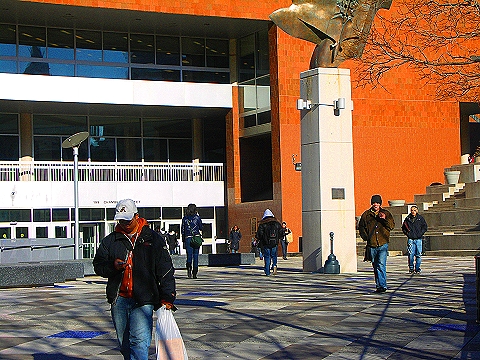On this post I’d like to address a couple of the questions we have received since launching the Fynanz website.
First, a few people have asked, “Will lenders be adequately compensated given the recent interest rate cuts by the Federal Reserve?” The concern is interest rates have declined to a level where the rates borrowers are required to pay for their student loans will not be enough to attract lenders to loan money.
Before I answer this question, it is important to first mention that our private student loan, which we call the OpenLoan, has a variable interest rate. This means the interest rate charged to borrowers will change depending on fluctuations in market interest rates.
It is also important to remember that the Federal Reserve rate cuts have broad implications across the financial markets, including the lowering of interest rates banks are willing to pay for depository products such as savings accounts and certificates of deposit. Therefore, the interest rates offered on the Fynanz OpenLoan will be attractive when compared to traditional bank products.
Below is a link to an average of the rates banks are paying on CD’s nationwide.
http://www.bankrate.com/brm/news/news_investing_home.asp
Unlike a bank, Fynanz loans do not carry any type of government guarantee, but they do carry a guarantee of up to 100% of the amount lent, depending on the FACS Grade of the loan to be paid from our guarantee fund (please see earlier post). Therefore, lenders will be able to earn an attractive rate of return coupled with a degree of safety that they are comfortable with.
The second question I would like to address, “If the interest rates earned by lenders are too high, why would borrowers use Fynanz instead of a traditional bank?”
Even though the Federal Reserve has recently cut interest rates, traditional lenders will likely not pass along much, if any, of this rate decrease to consumers. Banks remain very nervous given the current housing crises and the difficulty in the credit markets. Most traditional lenders have suffered substantial losses in other types of consumer lending businesses (mostly mortgage related) and remain very concerned with the financial health of consumers and consumer lending. Many lenders are currently in the process of tightening underwriting standards and reducing risk exposure. Therefore, the rates charged to consumers will likely continue to remain relatively unchanged even with the recent rate cuts by the Federal Reserve.
Below is a link to national averages for consumer credit cards:
http://www.bankrate.com/brm/news/news_cc_home.asp
The current market environment should present a very unique opportunity for Fynanz to execute its vision of providing an alternative private student loan financing option to students. Demand for educational financing is at an all time high and is expected to only rise as the costs of education continue to increase. The current credit crises has put a damper on the ability of many of the traditional private student lenders to lend. Some lenders have been forced out of business, and others are operating in difficult conditions due to a lack of available liquidity. Simply stated, lower interest rates as a result of the recent Federal Reserve rate cuts have not yet translated into lower lending rates for consumers.
Link to article regarding Sallie Mae scaling back Federal & Private Student lending
http://www.nytimes.com/2008/01/24/business/24sallie.html?_r=2&ref=business-&oref=slogin&oref=slogin
Fynanz is opening up a new avenue for borrowers to finance their education by putting control back into the hands of students, while providing lenders in search of attractive returns a way to put their money to work for a great cause.
Hopefully this addresses some of the questions.
Feel free to let us know of any comments.
Thanks,
Neal Coxworth
Director of Marketplace Development
www.fynanz.com












